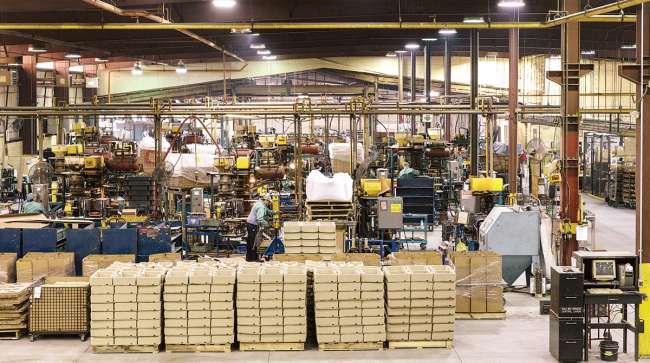Senior Reporter
Knorr-Bremse to Acquire R.H. Sheppard From Wabco

[Stay on top of transportation news: Get TTNews in your inbox.]
Knorr-Bremse AG announced it intends to acquire R.H. Sheppard Co. Inc. from Wabco Holdings Inc. to strengthen its position in steering systems for commercial vehicles, including in emerging highly automated trucks. The price was $149.5 million.
Wabco is selling Sheppard — for which it paid $145 million in August 2017 — in connection with the pending takeover of Wabco by ZF Friedrichshafen, which already includes similar steering capabilities. Munich-based Knorr-Bremse said its deal for R.H. Sheppard is subject to ZF completing that acquisition of Wabco.
The acquisition of Hanover, Pa.-based R.H. Sheppard will be carried out by Bendix Commercial Vehicle Systems in Elyria, Ohio, an indirect subsidiary of Knorr-Bremse and part of its commercial vehicle systems division.
The deal builds on Knorr-Bremse’s acquisition of the commercial vehicle steering division of Hitachi Automotive Systems in Japan in spring 2019.
In part one of a two-part exploration of autonomous technology today, our latest RoadSigns podcast revisits conversations with CEOs Alex Rodrigues of Embark and Cetin Mericli of Locomation. Hear them explain what testing automated trucks and developing platooning technology has taught them about the road ahead — and get new perspective with host commentary. Listen to a snippet from Rodrigues above, and to hear the full episode, go to RoadSigns.TTNews.com.
“Steering actuation is an essential component for Level 4 trucking, whether it be stand-alone driverless trucks or driverless followers in platooning. The supply base for steering actuation is relatively small,” Richard Bishop, a strategy consultant on connected automated vehicles, told Transport Topics.
With SAE Level 4, the vehicle is able to perform all driving functions under certain conditions, but the driver has the option of controlling the vehicle.
“It makes sense for Knorr-Bremse, in maintaining their strong position in longitudinal control via Bendix, to add steering actuation to their portfolio,” Bishop said. “This provides a counterbalance to ZF’s position in longitudinal control, Wabco, and steering actuation based on their acquisition of TRW several years ago.”
In 2018, Sheppard generated sales of around $146 million and had about 800 employees. It offers a suite of power-steering gears and provides precision engineered engine pumps and state-of-the-art remanufacturing service.
“For Knorr-Bremse, the acquisition of Sheppard is another important step in our strategy to become a global manufacturer of steering systems for commercial vehicles,” said Peter Laier, Knorr-Bremse’s head of commercial vehicle systems division. “With integrated steering and braking systems for commercial vehicles, we can realize globally expanded functions in driver assistance and automated driving together with our customers and leverage cost potential through system integration.”

The combination of Sheppard’s expertise in the field of recirculating ball steering systems and Knorr-Bremse’s global system know-how form an optimal basis for the introduction of torque overlay steering systems and functions of driver assistance and automated driving, particularly in the North American market, Knorr-Bremse noted in its release.
The move comes as the U.S. Department of Transportation is stepping up its oversight and support for advanced driver assistance systems as well as automated commercial vehicles that several companies continue to test in traffic.
Knorr-Bremse manufactures braking and control systems for commercial vehicles, and supplies all the world’s leading commercial vehicle manufacturers. Apart from complete braking systems, its product range includes driver assistance systems around the powertrain as well as associated aftermarket services. It sees the four megatrends in the commercial vehicle industry as traffic safety, connectivity, emissions reduction and electric mobility, and automated driving. It has about 28,500 employees at more than 100 sites in more than 30 countries.
Want more news? Listen to today's daily briefing:


